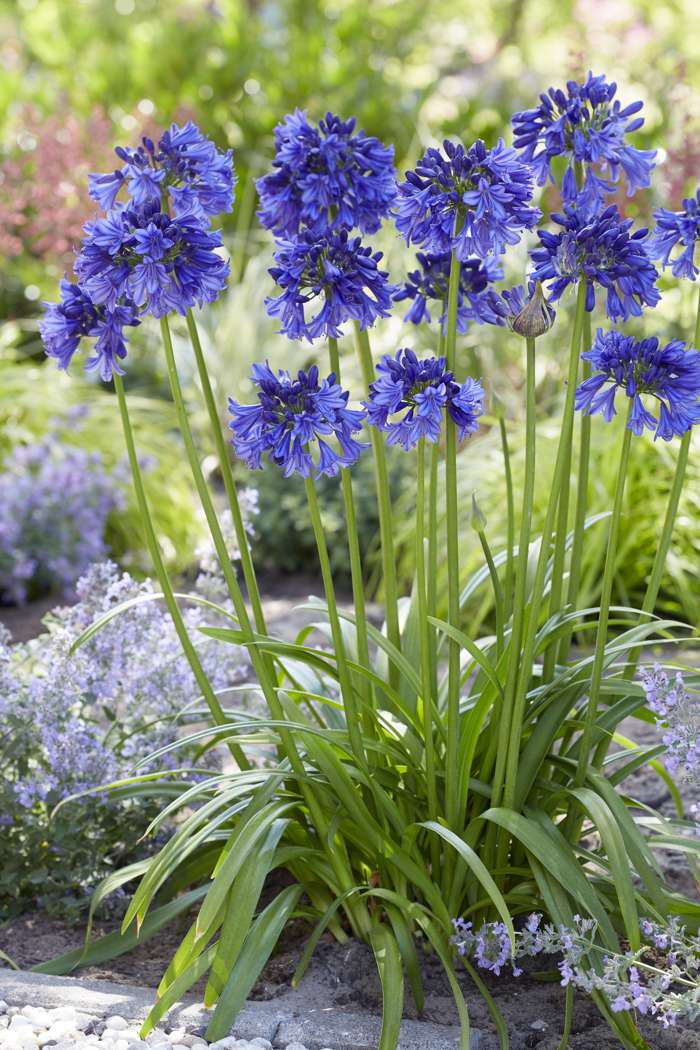Mastering the Art of Agapanthus Care: Important Actions for Healthy And Balanced Development and Vivid Blossoms
In the realm of gardening, the cultivation of agapanthus stands as a fulfilling endeavor for those who seek to nurture these stylish blooming plants. With their striking blossoms and elegant vegetation, agapanthus has actually recorded the interest of gardeners worldwide. Nevertheless, attaining optimum development and vibrant blossoms requires a nuanced approach that encompasses numerous important actions. From picking the best selection to mastering pruning techniques, the trip towards cultivating prospering agapanthus plants is diverse and holds the key to unlocking the full possibility of these botanical gems.

Selecting the Right Agapanthus Selection

When selecting the appropriate Agapanthus selection for your garden, consider variables such as environment suitability, blossom shade, and growth behavior. Additionally, take into consideration the climate in your area to make sure the Agapanthus variety you pick can prosper in your certain conditions. Understanding the development behavior of different Agapanthus selections is vital for appropriate placement within your yard.
Suitable Planting Problems
Thinking about the optimum ecological requirements is crucial for successful Agapanthus cultivation. Agapanthus plants are delicate to cold temperature levels and ought to be protected from frost during winter season months.
To guarantee healthy and balanced development and dynamic blossoms, plant Agapanthus bulbs at a depth of about 2-4 inches and space them 8-12 inches apart. Mulching around the base of the plants helps retain moisture and suppresses weed development.
Watering and Feeding Tips
Maintaining correct moisture degrees and offering crucial nutrients are crucial elements in the care program for Agapanthus plants. When it comes to sprinkling Agapanthus, it is essential to strike an equilibrium. These plants favor regularly wet dirt yet are susceptible to root rot if overwatered.
Feeding Agapanthus is crucial for promoting healthy development and prolific blossoms. Use a well balanced fertilizer, such as a 10-10-10 formula, in the early springtime as brand-new development emerges. Repeat this application every 6-8 weeks throughout the expanding period. Avoid extreme fertilizing, as it can result in rich vegetation at the expense of flowers. Constantly follow the producer's guidelines for correct dilution and application methods. By complying with these watering and feeding tips, you can ensure your Agapanthus plants prosper and generate dynamic, long-lasting flowers.
Trimming Strategies for Agapanthus
Trimming Agapanthus plants at the proper times and with correct techniques is important for keeping their health and promoting ideal growth and blooming. The excellent time to trim Agapanthus is in late winter or early spring before brand-new growth emerges.
For flowered stems, wait up until the flowers have actually perished and afterwards cut them back to the base. This not just cleans up the plant's look however additionally motivates the development of new flower buds. Deadheading invested flowers can additionally reroute the plant's power into producing even more flowers instead than establishing seeds. Nonetheless, if you wish to collect seeds for propagation, leave some flowers to fully grown and dry on the plant.
Keep in mind to use tidy, sharp tools to make specific cuts and lower the threat of introducing diseases. Agapanthus. Normal trimming will assist maintain your Agapanthus looking healthy and balanced and cool while making certain a plentiful screen of lovely blooms
Managing Common Insects and Diseases
After making certain appropriate pruning strategies for Agapanthus, it is necessary to attend to typical parasites and diseases that can influence the health and wellness and vigor of these plants. Agapanthus plants are normally hardy yet can still succumb to particular issues. One typical bug that impacts Agapanthus is the Agapanthus gall midget. This tiny, orange fly lays its eggs in the foliage, causing altered growth and flower buds that fail to open. To combat this bug, trim and ruin any type of damaged plant components and consider using insecticidal soap.
Another common problem is fungal fallen leave place, which presents as dark lesions on the fallen leaves. To stop fungal conditions, make certain excellent air circulation around the plants, prevent overhead watering, and eliminate any kind of contaminated leaves quickly. Additionally, Agapanthus plants can deal with origin rot if they are planted in badly draining pipes dirt. To prevent this, plant Agapanthus in well-draining soil and prevent overwatering. By being vigilant and taking timely activity against More about the author conditions and parasites, you can help your Agapanthus plants flourish and create lively blossoms.

Conclusion
To conclude, mastering the art of agapanthus treatment includes picking the best range, providing optimal growing problems, appropriate watering and feeding, proper trimming techniques, and dealing with usual bugs and diseases. By adhering to these necessary steps, you can ensure healthy and balanced growth and dynamic blossoms for your agapanthus plants. Bear in mind to regularly check and maintain your plants to advertise their overall health and durability.
To ensure healthy and balanced development and lively blossoms, plant Agapanthus bulbs at a deepness of regarding 2-4 inches and area them 8-12 inches apart. By complying with these watering and look at this web-site feeding ideas, you can ensure your Agapanthus plants prosper and produce lively, long-lasting flowers.
One common bug that affects Agapanthus is the Agapanthus gall midge. In addition, Agapanthus plants can suffer from origin rot if they are planted in badly draining pipes dirt. By adhering to site link these vital actions, you can make certain healthy and balanced growth and lively blossoms for your agapanthus plants.